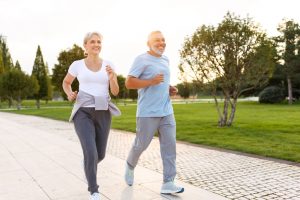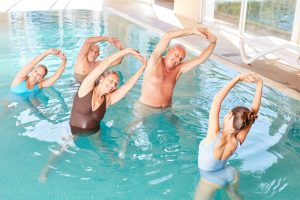Consistent adherence to physical activity guidelines in midlife is associated with higher health-related quality of life in women, according to research. This is according to a new study by Binh Nguyen from the University of Sydney, Australia, and colleagues, published in the open access journal PLOS Medicine.
Physical Activity Promises a Higher Quality of Life

The evidence for an association between physical activity and health-related quality of life is primarily based on cross-sectional studies and short-term randomized controlled trials. Few longitudinal studies have measured physical activity at more than one time point and examined the long-term causal effects of exercise. In the new study, the researchers used data collected at three-year intervals starting in 1996 from 11,336 participants in the Australian Longitudinal Study on Women’s Health. The women were born between 1946 and 1951 and were therefore between 47 and 52 years old at the start of the study. Participants were categorized as either meeting the WHO physical activity guidelines – 150 minutes per week – over the entire fifteen-year period, not meeting the guidelines initially but starting to meet them at age 55, 60 or 65, or never meeting the guidelines.
Health-related quality of life was assessed using the physical health composite score (PCS) and mental health composite score (MCS) from the Short Form 36 Health Survey, which includes 36 questions on functional health and well-being. On average, women who consistently adhered to physical activity guidelines and those who started at age 55 had a three-point higher PCS compared to those who did not adhere to physical activity guidelines. The effect of physical activity on PSC was significant even after controlling for socioeconomic factors and pre-existing health diagnoses.
The Benefits of Exercise
Together with existing evidence, this study contributes to the growing evidence of the benefits of maintaining or adopting an active lifestyle in middle age. An important public health message is that even if women do not begin to meet physical activity guidelines until their mid-50s, an active lifestyle for as many years as possible could have significant health benefits for physical health, particularly physical performance.
In fact, exercise can help keep the body’s blood sugar levels stable. Among other things, this helps to prevent the development of diabetes. In addition, exercise is important for building and maintaining muscle mass. Increased muscle mass can help prevent falls, which are particularly common in old age. The cardiovascular system also benefits from physical activity. A regular walk is often enough. Brisk walking on a regular basis not only promotes muscle metabolism, it also increases the elasticity of blood vessels and improves heart function. And: research even shows that physical fitness helps to reduce the risk of dementia by 33 percent. This is particularly because exercise helps to increase blood flow to the brain, which stimulates the growth and survival of brain cells.
Many Obstacles for People of Retirement Age
Previous research has already shown that the over 55s in particular should do more to keep fit as they approach retirement age – because of the physical, mental and social benefits that exercise brings. Yet health problems, lack of time and energy due to work and lack of motivation leave many approaching retirement in poor shape.
Researchers from the University of East Anglia worked with Active Norfolk to gain insights into the link between retirement and physical activity. More than 1,000 people over the age of 55 took part in an online survey on physical activity and the transition to retirement, looking at their levels of physical activity and their expectations and experiences of retirement. The research team also conducted focus groups and interviews with people of retirement age on the topic of physical activity. Particularly in countries such as England, participation in physical activity tends to decline around the age of 55.
Frailty and pre-frailty – the decline in health, resilience and mobility that often accompanies ageing – are conditions that were previously thought to occur in people of retirement age and above. However, they now affect a third of UK adults aged 50 to 65. Adults are spending more years of their lives at work than ever before. Retirement is a life-changing event that offers many opportunities – but it comes with a decline in physical activity, health and wellbeing. To enjoy a fit and healthy retirement, people need to maintain their physical fitness to the age of 50 and beyond. However, researchers have found that there are many barriers to this, from poor health, lack of motivation, the cost and availability of sports, activities and fitness classes, to lack of time due to work or, in many cases, caring responsibilities. Supporting older adults to lead an active lifestyle before and in retirement could ensure that people are more mobile, productive and healthy in retirement.
Providing Opportunities to Promote Physical Activity in Older Age and Quality of Life
The report shows how employers and healthcare providers could do more to promote physical fitness for people over 55. And that sports centers and community fitness projects could also play a greater role in promoting healthy aging. The research findings highlight the potential role of physical activity providers, workplaces and support services such as health professionals and age-related charities in reaching people who are working full-time, part-time or are already retired. Other recommendations for employers include having health and wellbeing policies that promote physical activity, providing opportunities to be active at work such as walking groups and cycle to work schemes, developing a pre-retirement support package with advice on physical activity and encouragement to make plans to be active in retirement, and promoting a culture change to encourage activity in later life.






